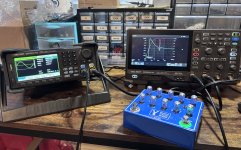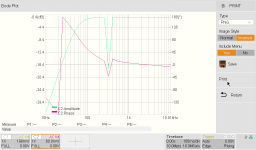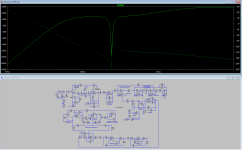Rpschultz13
Well-known member
In mid 2023 I started designing my own acoustic preamp, striving for similar functionality to the Grace Designs Alix. I was annoyed by how expensive good acoustic guitar preamp/EQ's are, thought I could make my own cheaper. I started with the preamp section of a Fishman loudbox, added a gain section and then used the ESP State Variable Filters to add:
Earlier this year (2025) I took my prototype to a Python workshop to show someone for fun (telling him I never got it to work), he turned the knobs and switches, etc, thought it was cool. Few weeks later I took it home and was going to try troubleshooting again... plugged it in and it WORKED! Evidently one of the switches was routed wrong on 1 side, but he put it in the direction that worked. Talk about luck.
Anyway, so I fixed the 6 different errors on the PCB and printed the next version this spring. I just finished putting it together. It works! I don't have the footswitches wired in yet, and I need to play through it for a while to see how useful the different sections are musically.




- Adjustable Notch/HPF (switch)
- High and Low shelf filters
- Sweepable Mid (hi/low switch) parametric filters
Earlier this year (2025) I took my prototype to a Python workshop to show someone for fun (telling him I never got it to work), he turned the knobs and switches, etc, thought it was cool. Few weeks later I took it home and was going to try troubleshooting again... plugged it in and it WORKED! Evidently one of the switches was routed wrong on 1 side, but he put it in the direction that worked. Talk about luck.
Anyway, so I fixed the 6 different errors on the PCB and printed the next version this spring. I just finished putting it together. It works! I don't have the footswitches wired in yet, and I need to play through it for a while to see how useful the different sections are musically.
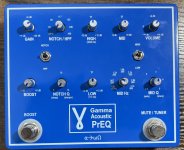
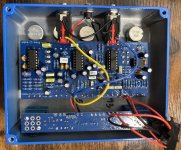
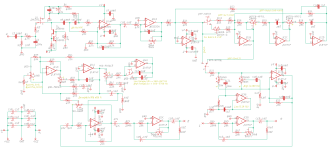
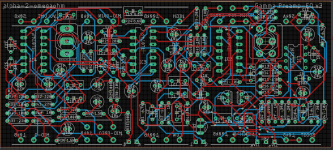
Last edited:

